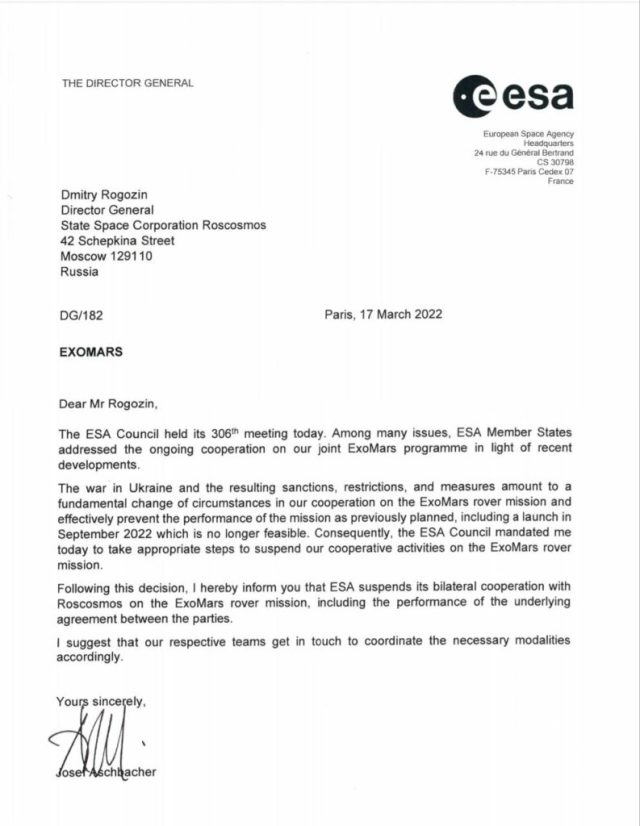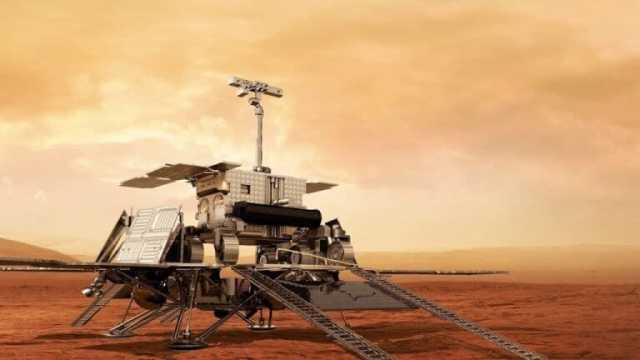The European Space Agency refused to cooperate with Roscosmos in the ExoMars mission. The Russian side announced that it would launch its landing mission to Mars on the Angara, but did not mention anything about plans to replace the European rover. Most likely, the mission will take place without its rover.
In September 2022, the ExoMars-2022 mission was planned for the Red Planet. The Proton rocket (one of the last) was supposed to send it into space. After many months of flight, the Kazachok landing platform (Russian-made) weighing 830 kilograms would land on Mars, and the Rosalind Franklin rover would descend from that to the surface of the Red Planet.
After the letter from the head of the European Space Agency, all this will not happen. It's not just about the rover: in theory, the mission could have been launched without it. The problem is that some of the European rover's instruments are Russian-made, and some of the Kazachka instruments are European. In fact, the breakdown of relations between space agencies means that now they will all have to be replaced.

Letter from the head of the European Space Agency on the curtailment of the joint project
Image source: Dmitry Rogozin
As the head of Roscosmos Dmitry Rogozin noted, the process of preparing a new mission for the Russian side will take several years. By this time, the Angara will be ready, which will launch the mission into space. It is less clear how the European part of the program will proceed now. It is relatively easy to replace the Russian infrared spectrometer ISEM: there are similar devices in the West. However, the Russian gamma-neutron spectrometer "HADRON-RM" has no direct analogues yet, and its development will be quite long. It is not difficult to launch a new European mission into space on a SpaceX rocket.
But the Europeans do not have a landing platform from which the rover could "land" on the fourth planet. Its development will take many years. At the same time, the expiration date of some Rosalind Franklin nodes may have expired by that time. A similar problem is with the Kazachok platform: they were also not designed for operability after many years of waiting. In addition, as Naked Science has already written, the platform itself is now in Europe, where it was sent as part of the preparation of the mission. Now it is not very clear even how to deliver the "Cossack" back: there are no flights between the EU and Russia and there will not be in the foreseeable future. Perhaps the issue will be solved by flying through a third country.

Russian landing platform "Kazachok"
Image source: Wikimedia Commons
You can read in detail about what the mission was supposed to do in the Naked Science material . Now, after the forced postponement for years, its tasks can be adjusted somewhat. For example, by that time, the question of the presence of methane and oxygen in the surface layers of the Martian atmosphere can already be resolved by other missions.
In general, the creation of a landing platform for landing on Mars is an extremely difficult technical task. In 2016, the European Schiaparelli lander crashed while attempting a soft landing. The reason is an error in the inertial navigation unit.
For our side, the key problem will be the absence of a rover. The Kazachok lander itself is stationary. In theory, Russia may try to develop a planetoid, but in practice such a project will be quite expensive. It is unclear how much Roscosmos is ready to invest in modern conditions. Judging by the fact that Rogozin did not say anything about creating his own rover in the comments about this event, there is no reason to expect it yet.



